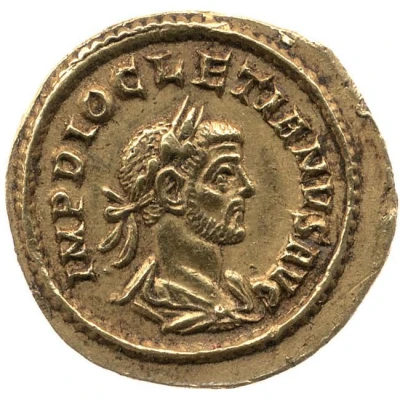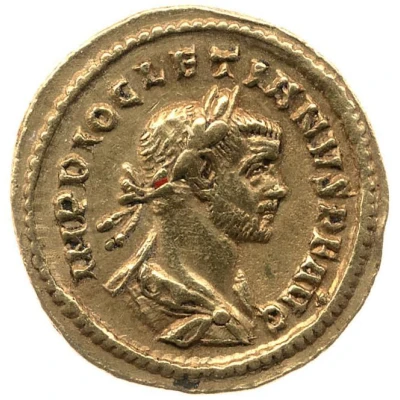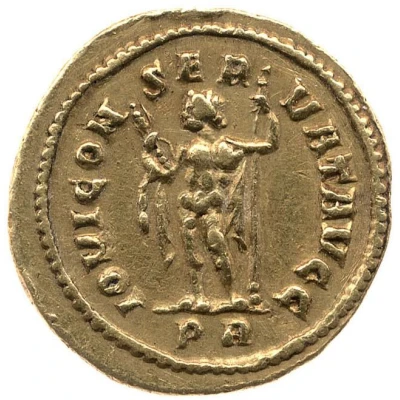


© Trustees of the British Museum
Quinarius Aureus - Diocletianus IOVI CONSERVAT AVG; Jupiter
| Gold | 2.2 g | - |
| Issuer | Rome › Roman Empire (27 BC - 395 AD) |
|---|---|
| Emperor | Diocletian (Gaius Aurelius Valerius Diocletianus) (284-305) Maximian Herculius (Marcus Aurelius Valerius Maximianus) (286-305) |
| Type | Standard circulation coin |
| Years | 284-294 |
| Value | Gold Quinarius (25⁄4) |
| Currency | Antoninianus, Reform of Caracalla (AD 215 – 301) |
| Composition | Gold |
| Weight | 2.2 g |
| Shape | Round (irregular) |
| Technique | Hammered |
| Demonetized | Yes |
| Updated | 2024-10-05 |
| Numista | N#305889 |
|---|---|
| Rarity index | 100% |
Reverse
Jupiter, standing left, holding thunderbolt in right hand and sceptre in left hand.
Script: Latin
Lettering: IOVI CONSERVAT AVG
Translation:
Iovi Conservatori Augusti.
To Jupiter, protector of the emperor (Augustus).
Comment
Example of this type:Trustees of the British Museum
Source:
Online Coins of the Roman Empire (OCRE)
Interesting fact
One interesting fact about the Quinarius Aureus - Diocletianus (IOVI CONSERVAT AVG; Jupiter) coin is that it was issued during a time of economic reform and currency standardization in the Roman Empire. The coin was introduced by Emperor Diocletian in 284 AD as part of his efforts to stabilize the empire's economy and combat inflation. The Quinarius Aureus was a new denomination that replaced the older gold coinage, and it became the standard gold coin of the Roman Empire for over a century. Its design featured the image of Jupiter, the Roman god of thunder, and the inscription "IOVI CONSERVAT AVG," which translates to "Jupiter, protector of the emperor." The coin's weight of 2.2 grams was also a new standard that replaced the older, heavier gold coins. This coin is a significant piece of history, representing a time of economic change and reform in the Roman Empire.

